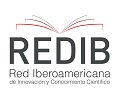Consecuencias reproductivas y sanitarias de los abortos bovinos en la cuenca lechera del Valle de Lerma, Salta, Argentina
DOI:
https://doi.org/10.14409/favecv.v20i2.10642Palabras clave:
aborto, bovino lechero, sanidad ganadera, ArgentinaResumen
Con el objetivo de investigar los efectos de los abortos bovinos en la cuenca lechera del Valle de Lerma se estudiaron los registros de datos de 128 vacas Holstein en ordeño obtenidos de software de 4 tambos. Los abortos se clasificaron en: vacas abortadas, vueltas a inseminar que continúan en lactancia (VAC, n= 36) y vacas que abortaron e iniciaron en una nueva lactancia (VAI, n=33), además se les sumaron los registros de vacas con partos normales (VPN, n= 59). Se registraron los litros de leche a los 305 días de lactancia (L/305), los días en lactancia (DEL), los intervalos entre partos (IPP), número de eventos de salud ocurridos pos aborto y el destino final de los animales (continúa en el tambo, descarte, muerte o sacrificio). Las variables continuas se sometieron a análisis de varianza en un modelo lineal mixto y las discretas a la prueba de Chi cuadrado y Odds Ratio (OR). No se hallaron diferencias entre los litros de leche producidos (L/305) por las vacas VPN (8640 l) y las VAC (8498 l) pero si (p<0,0001) entre éstas y el grupo VAI (5742), considerando las vacas de diferente número de lactancias y el tiempo gestacional del aborto. El grupo VAC tuvo DEL (p<0,0001) e IPP (p<0,0001) respectivamente más prolongados (639,7 e 441,2 d.) que las vacas del VAI (419,9 e 404,2 d.) y VPN (405,5 e 476,7 d.). Las vacas abortadas (VAC + VAI) tuvieron una mayor (p<0,0001) probabilidad de contraer respectivamente desórdenes sanitarios y reproductivos (OR= 6,5, IC 3,2 - 24,3) y descartes más muertes/sacrificios (OR= 6,72, IC 2,9 - 15,1) en comparación con VPN. Estos resultados muestran los graves efectos de los abortos sobre la performance productiva y la salud de las vacas lecheras.
Citas
Bartels CJM, Van Schaik G, Veldhuisen JP, Van den Borne BHP, Wouda W, Dijkstra T. 2006. Effect of Neospora caninum serostatus on culling, reproductive performance and milk production in Dutch dairy herds with and without a history of Neospora caninum-associated abortion epidemics. Prev. Vet. Med. 77: 186-198.
Butler WR, Smith RD. 1989. Interrelationships between energy balance and postpartum reproductive function in dairy cattle. J. Dairy Sci. 72: 767-783.
Capuco AV, Akers RM, Smith JJ. 1997. Mammary growth in Holstein cows during the dry period: quantification of nucleic acids and histology. J. Dairy Sci. 80: 477-487.
Catalino MB, Casaro BG, Daglio MC. 2017 Cuantificación de pérdidas de gestación entre los días 35-100 en vacas de tambo de la Cuenca Mar y Sierras. Tesina para optar al grado de Veterinario, F.C. Veterinarias, UNCPBA, Tandil, 27 pp.
De Vries A. 2006. Economic value of pregnancy in dairy cattle. J. Dairy Sci. 89: 3876-3885.
El-Tarabany MS. 2015. Impact of stillbirth and abortion on the subsequent fertility and productivity of Holstein, Brown Swiss and their crosses in subtropics. Trop. Anim. Health. Prod. 47: 1351-1356.
Fetrow J, Mcclary D, Harman R, Butcher K, Weaver L, Studer E, Ehrlich J, Etherington W, Guterbock W, Klingbord D, Reneau J, Williamson N. 1990. Calculating selected Reproductive Indices: Recommendations of the American Association of Bovine Practitioners. J. Dairy Sci. 73:78-90.
Forar A, Gay J, Hancock D. 1996. The frequency of edemic fetal loss in dairy cattle: a review. Theriogenology 43: 989-1000.
Fourichon C, Seegers H, Malher X. 2000. Effect of disease on reproduction in the dairy cow: a meta-analysis. Theriogenology 53: 1729-1759.
Gädicke P, Monti G. 2008. Aspectos epidemiológicos y de análisis del síndrome de aborto bovino. Arch. Med. Vet. 40: 223-234.
Gädicke P, Vidal R, Monti G. 2010. Economic effect of bovine abortion syndrome in commercial dairy herds in Southern Chile. Prev. Vet. Med. 97: 9-19.
Ghavi Hossein-Zadeh N. 2013. Effects of main reproductive and health problems on the performance of dairy cows: a review. Span. J. Agric. Res. 11 (3): 718-735.
Ghavi Hossein-Zadeh N, Ardalan M. 2011. Evaluation of the potential effects of abortion on the productive performance of Iranian Holstein dairy cows. Anim. Sci. J. 82: 117-121.
Gröhn Y, Erb H, Mc Culloch Ch, Saloniemi H. 1990. Epidemiology of reproductive disorders in dairy cattle: associations among host characteristics, disease and production. Prev. Vet. Med. 8: 25-39.
Hanson T, Bedrick EJ, Johnson WO, Thurmond MC. 2003. A mixture model for bovine abortion and foetal survival. Stat. Med. 22: 1725-1739.
Kaneene JB, Miller R. 1995. Risk factors for metritis in Michigan dairy cattle using herd- and cow-based modelling approaches. Prev. Vet. Med. 23: 183-200.
Keshavarzi H, Sadeghi-Sefidmazgi A, Ghorbania GR, Kowsara R, Razmkabirb M, Amerc P. 2020. Effect of abortion on milk production, health, and reproductive performance of Holstein dairy cattle. Anim. Reprod. Sci. 217: 106458.
Lee JI, Kim IH. 2007 Pregnancy loss in dairy cows: the contributing factors, the effects on reproductive performance and the economic impact. J. Vet. Sci. 8: 283-288.
Melendez P, Pinedo P. 2007. The association between reproductive performance and milk yield in Chilean Holstein cattle. J. Dairy Sci. 90: 184-192
Miller R. 1986. Bovine Abortion. In: Morrow D (ed). Current Therapy In: Theriogenology. WB Saunders Company, Michigan State University, Michigan, USA.
Nigussie T. 2018. A Review on the Role of Energy Balance on Reproduction of Dairy Cow. J. Dairy Res. Tech. 1: 003.
Norman HD, Miller RH, Wright JR, Hutchison JL, Olson KM. 2012. Factors associated with frequency of abortions recorded through Dairy Herd Improvement test plans. J. Dairy Sci. 95: 4074-4084.
Pereyra WR, Suarez VH, Cardoso N, Gual I, Martínez GM, Capozzo AV, Mansilla, FC. 2020. Prevalencia sérica de Neospora caninum y factores de riesgo asociados a su transmisión en tambos de la provincia de Salta, Argentina. Rev. Argent. Microbiol. 53: 145-153.
Peter AT. 2000. Abortions in dairy cows: new insights and economic impact. Adv. Dairy Technol. 12: 233-244.
Plaizier JC, King GJ, Dekkers JC, Lissemore K. 1997. Estimation of economic values of indices for reproductive performance in dairy herds using computer simulation. J. Dairy Sci. 80: 2775-2783.
Rafati N, Mehrabani-Yeganeh, Hanson TE. 2010. Risk factors for abortion in dairy cows from commercial Holstein dairy herds in the Tehran region. Prev. Vet. Med. 96: 170-178.
Salasel B, Mokhtari A, Taktaz, T. 2010. Prevalence, risk factors for and impact of subclinical endometritis in repeat breeder dairy cows. Theriogenology 74: 1271-1278.
Suarez VH, Martínez GM. 2015. Características y Problemáticas Productivas - Sanitarias de la Lechería del Valle de Lerma (Salta). INTA Ediciones, Col. Investigación, desarrollo e innovación. 66 pp.
Thomsen PT, Houe H. 2006. Dairy cow mortality. A review. The Vet. quarterly 28: 122-129.
Thurmond MC, Hietala SK. 1996. Culling associated with Neospora caninum infection in dairy cows. Am. J. Vet. Res. 57: 1559-1562.
Thurmond MC, Picanso JP, Jameson CM. 1990. Considerations for use of descriptive epidemiology to investigate fetal loss in dairy cows. J. Am. Vet. Med. Assoc. 197: 1305-1312.
Thurmond MC, Branscum AJ, Johnson WO, Bedrick EJ, Hanson TE. 2005. Predicting the probability of abortion in dairy cows: A hierarchical Bayesian logistic-survival model using sequential pregnancy data. Prev. Vet. Med. 68: 223-239.
Weaver LD, Goodger WJ. 1987. Design and economic evaluation of dairy reproductive hlth programs for large dairy herds. Comp. Contin. Educ. Pract. Vet. 9: 355-366.
Wilde CJ, Knight CH. 1998. Metabolic adaptations in mammary gland during the declining phase of lactation. J. Dairy Sci. 72: 1679-1692.
Wiltbank, MC, Baez GM, Garcia-Guerra A, Toledo MZ, Monteiro PLJ, Melo LF, Sartori R. 2016. Pivotal periods for pregnancy loss during the first trimester of gestation in lactating dairy cows. Theriogenology 86: 239-253.
Descargas
Publicado
Cómo citar
Número
Sección
Licencia
FAVE Sección Ciencias Veterinarias ratifica el modelo Acceso Abierto en el que los contenidos de las publicaciones científicas se encuentran disponibles a texto completo libre y gratuito en Internet, sin embargos temporales, y cuyos costos de producción editorial no son transferidos a los autores. Esta política propone quebrar las barreras económicas que generan inequidades tanto en el acceso a la información, como en la publicación de resultados de investigaciones.
Los artículos de la revista son publicados en http://bibliotecavirtual.unl.edu.ar/publicaciones/index.php/FAVEveterinaria/issue/current/, en acceso abierto bajo licencia Creative CommonsAtribución-NoComercial-Compartir Igual 4.0 Internacional.











